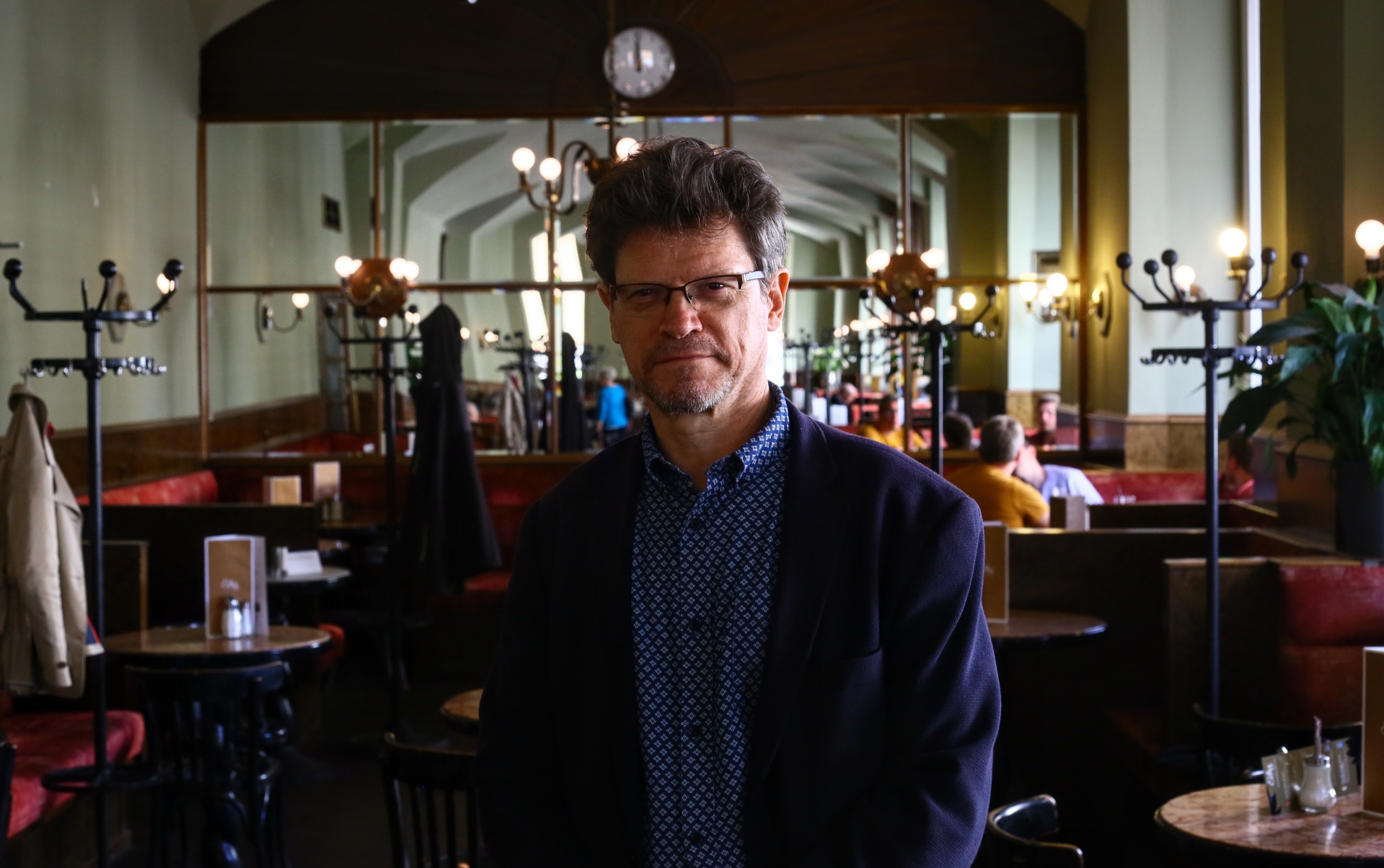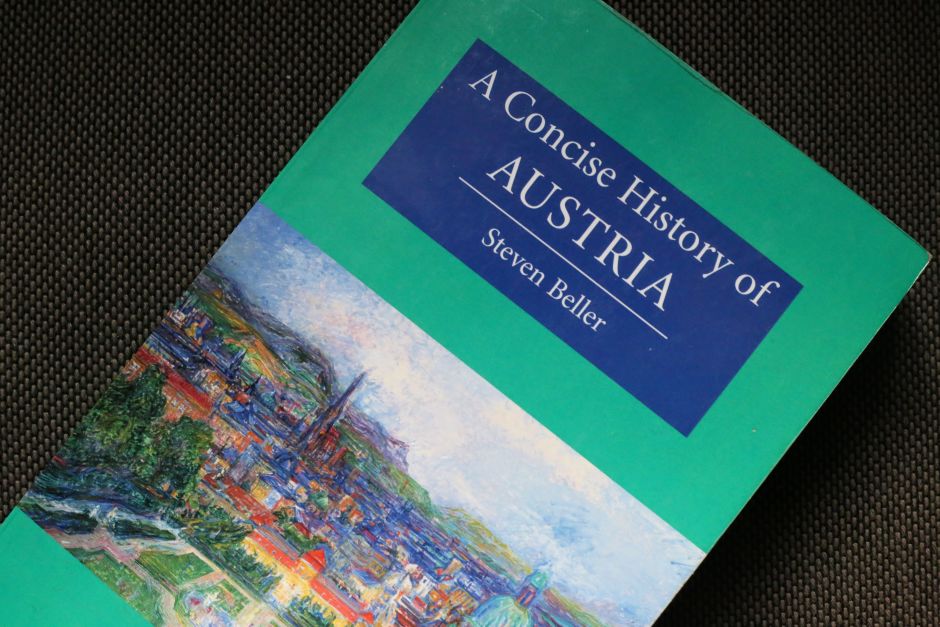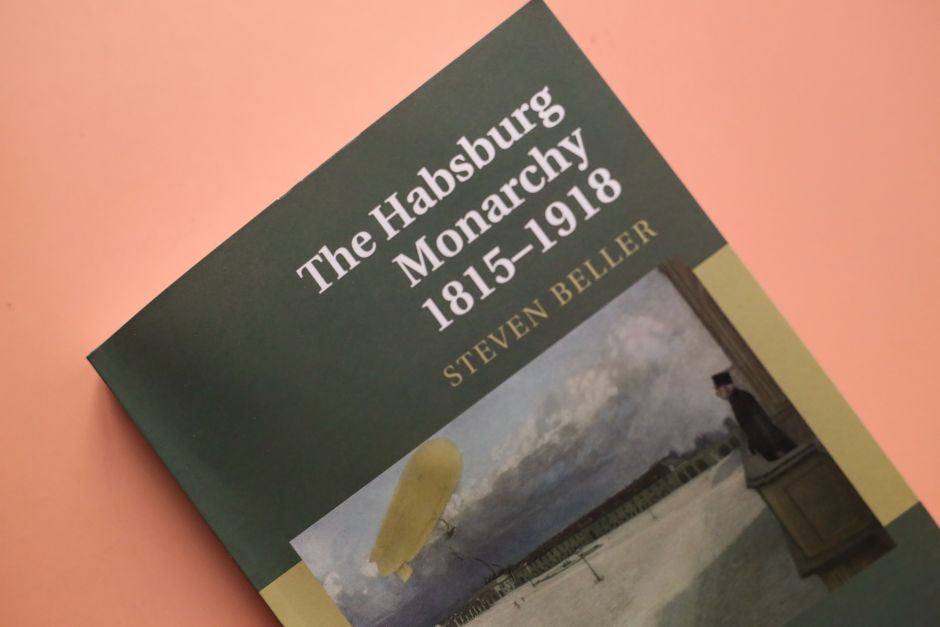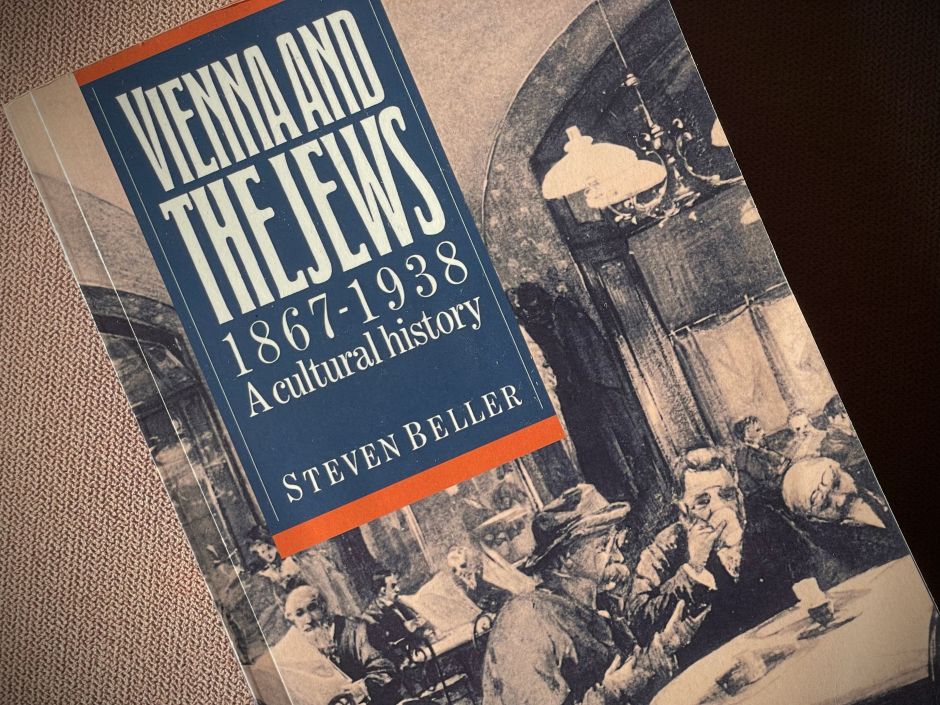
Born in London, Steven Beller is a scholar specializing in Austria and the Habsburg Monarchy. He studied history at the University of Cambridge where he later worked as a research fellow. Steven’s books include The Habsburg Monarchy 1815-1918, Vienna and the Jews 1867-1938, and A Concise History of Austria. His works are widely regarded as benchmarks for understanding Austria’s past and present. Recently, I had the chance to interview him and below is a condensed version of our conversation. (Here, the second part of our interview.)
Austria-Hungary (1867-1918), an empire home to Germans, Hungarians, Czechs, Croats, Serbs, Slovaks, Romanians, Poles, Ukrainians, Jews, Slovenians, and Italians. It had two political centers: The Austrian Parliament in Vienna and the Hungarian Parliament in Budapest. It also had two faces: cosmopolitan and modern, but also backward and anti-semitic.
Austria-Hungary was a complicated place. Multiethnic and multilingual, so you’re bound to have many narratives. The fact is, toward the end of its existence in 1914 it had a modern urban culture and a solid economy. Sure, the politics was a bit weird, but it was democratizing. At least the Austrian side was. Hungary not so much. If World War I hadn’t happened, it could’ve become a model for the European Union. A decentralized federal state with a constitution. Even with the Habsburg family at the top. However, WWI happened partly because of Austria-Hungary. Its emperor, Franz Joseph (1830-1916),was, after all, the person who first declared war.
Why did the Czechs, the country’s biggest nationality after Germans and Hungarians, agree to the formation of Austria-Hungary in 1867? They had little representation in the Austrian Parliament.
They didn’t agree. Czech representatives boycotted the Austrian Parliament from 1863-1879. The Czech nobility and nationalists felt betrayed by the Dual Monarchy. In 1871, Emperor Franz Joseph tried to give them some autonomy and power, but German liberals on the Austrian side objected to this. It’s hard to imagine it these days, but for Germans, the Czech territories (Bohemia, Moravia and Silesia) were as much German provinces as Czech. Czechs might compose a majority of the population, but the language of culture, literature, and administration was German and it had been part of Germany (the Holy Roman Empire and then the German Confederation) for a long time.
Still, the Germans failed to Germanize the Austrian side of Austria-Hungary.
The problem for Germans was that they were only about a third of Austria’s population in the 19th century. Slavs, mainly Czechs and Poles, were the biggest ethnic group in Austria. And Emperor Franz Joseph himself wasn’t a fan of German liberals. He was brought up as a conservative, Catholic autocrat, so he didn’t like the anti-clerical, constitutional policies of German liberals. Secular education for the masses, for example. Or limits on his foreign policy. When it became clear that German liberal leaders wanted to stop him from occupying Bosnia Herzegovina in 1878, he went all in against German liberals.

Was he successful?
Yes. In 1879, the German liberals fell out of power in Austria. The price to pay for the emperor was giving more rights, political and linguistic, to Czechs, Poles, Slovenes and the other nationalities in the country. (Ironically the liberals had already given the Polish noble leadership in Galicia a large degree of autonomy in 1868 to obtain their support in the parliament. The Polish leadership now just switched sides to keep their power in Galicia.) Many Czech, Polish and other nationalities’ schools opened, and Austria became a multinational state. This was under the conservative, so-called Iron Ring government of prime minister Eduard Taaffe (1879-93), a childhood friend of Emperor Franz Joseph.
Was the Hungarian side also democratizing?
Not at all, at least not in terms of expanding representation of the non-Magyar nationalities. After 1867, all parties in the Hungarian Parliament were nationalist, the question was whether you were a radical Hungarian nationalist, or a more moderate Hungarian nationalist. Ironically, Hungarians were less than fifty percent of the population. But the others didn’t count within the system. As if Romanians and Slovakians weren’t there. The Croats did have some autonomy, although that was undermined over time.
What did Emperor Franz Joseph think of this?
Franz Joseph as King of Hungary could veto any proposed law after 1867 but he rarely exercised that right, because he was afraid of what the Hungarians could get up to, as they had in the past. So, using the French model, Hungarian politicians went ahead and “Magyarized” the country between 1867 and 1914. It was civic nationalism, not ethnic nationalism: as long as you spoke Hungarian, they didn’t care much if you had Slovak or Croatian or whatever background. The Hungarian government was liberal, but not democratic.
In what way was the Hungarian government liberal after 1867?
They spread education. Hungarian-speaking education, but nonetheless there was a large program to enlighten the masses and create a modern economy. They supported commerce and industry to develop the country. They were anti-clerical and introduced civil marriage before Austria did. They supported Jews and stamped down on the anti-semitism of Győző Istóczy in the 1880s, unlike the Taaffe government in Austria.
Did Hungary benefit from being part of Austria-Hungary?
Hungary did extremely well. They received a lot of investment because of the common currency and had access to the Austrian markets. Also, Hungary ran Austrian foreign policy for much of the time, most famously under foreign minister Gyula Andrássy (1871-79). A Hungarian, Béni Kállay, was in charge of Bosnia Herzegovina (1882-1903). Many Austrian historians today think that Hungary basically ruled Austria-Hungary.
Really?
Any time the Austrian side wanted to change the political framework of their side, for example take steps toward federalization, the Hungarians vetoed it based on the rules of the Compromise of 1867. On many issues, the Hungarian Prime Minister, Kálmán Tisza (1875-90), later his son, István Tisza, could go to King Franz Joseph and say, “sorry, we can’t do that. I’ve got all this opposition telling me not to accommodate this.” And, because of the Compromise, he could often say to the Austrian Emperor (also Franz Joseph) “sorry you can’t do that. I’ve got all this opposition telling me not to allow it.”
As Ottoman Turkey weakened and retreated from the Balkans, new territories opened up. In 1878, Austria-Hungary occupied Bosnia Herzegovina. Why was this problematic?
Because it was a liability. Bosnia was a Slavic country and Hungary didn’t want more Slavs, nor did the Germans in Austria. No one knew what to do with it. If either side had taken Bosnia, it would have changed the balance of power. So it was run as a little colony from 1878.
Why did Austria-Hungary decide to annex Bosnia Herzegovina in 1908?
It was a case of “social imperialism”: a strong, bold foreign policy would deflect from social problems at home and unite the country. It was about prestige for Emperor Franz Joseph, and his Foreign Minister, Lexa von Aehrenthal wanted it to be seen as a sign that the country was punching above its weight. Aehrenthan also had the idea of creating a Trialist Empire, merging Austria-Hungary’s South Slav territories with Bosnia Herzegovina to form a third entity alongside Austria and Hungary. This was naive, because the Hungarians would never have accepted this (see above).
So the annexation backfired.
It antagonized Russia, and was a humiliation for Serbia, which by the end of the Second Balkan War in 1913 was the most powerful nation in the Balkans. Austria-Hungary had seen Serbia as a problem for some years, even launching the “Pig War” in 1906 (a trade war over pork). But by 1914, it saw Serbia as a lethal threat to its borders, because Serbia wanted to create a pan-Slavic state of Serbs and Croats, with parts carved out of Austria-Hungary.

Was this a real threat?
Yes. Because of solidarity from other Slav groups, especially Slovenians and Czechs as well as Croats and Serbs within Austria-Hungary, Serbia was also seen as posing a domestic threat. The goal of Archduke Franz Ferdinand’s 1914 tour in Bosnia was both to assert a Habsburg presence in the province, but also to calm things down. He was the most pacific Habsburg. He didn’t want war with Serbia. Ironically, that’s one of the reasons he was assassinated; he stood in the way of aggressive Serbian nationalists.
After World War I, in 1918, Austria-Hungary collapses. The Habsburg House is finished. Austria becomes a small republic. Suddenly a union with Germany is very attractive.
Remember that Austria and Germany had a shared history until 1866. Vienna was the executive capital of Germany – both the Holy Roman Empire (1438-1806) and later the German Confederation (1815-66). Sure, there was an Austrian German identity different from Reich Germans across the border, but many Austrian German-speakers still thought of themselves as Germans. Being thrown out of Germany, as Austria was in 1866 by Prussia, was a traumatic experience.
So there was a historical continuity between Austria and Germany.
Historical and cultural. Germany was viewed as more progressive: more Protestant, more secular, more civilized. Austria-Hungary was Catholic and seen as relatively backwards compared to Germany.

Was this still true when Hitler annexed Austria in 1938 to the jubilation of Austrians (Anschluss)?
No, and yes. It was clear to many on the Left, for instance, that Hitler’s Germany was a terrible threat, but many saw it as a choice between two evils. If you were an Austrian socialist, it didn’t make much difference to you whether you were under Nazi Germany or the Austrian fascists they replaced. The Nazis were actually more modern, and anti-clerical; they introduced civil marriage in 1938 and boosted the economy with investments. They transformed Linz into a major industrial center. Of course, if you were Jewish, it was a horrifically different story.
What happened to Viennese Jews after 1938?
Between March 1938 and October 1941, the Nazis seized all Jewish property and effectively forced Jews to leave the country. Most of them did. Of the roughly 190,000 Viennese Jews, “only” a third, 65,000 people, were killed in the Holocaust. The irony is that the original Nazi animus was against these German and Austrian Jews – “the rich bankers, the lefties, the Bolsheviks” – most of whom escaped, not the often more traditionalist Jews in Eastern Europe whom the Nazis murdered in their millions.
Where did the Austrian Jews go?
Lots of them went to the United States, Britain, Australia, and South America. There, they participated in creating modern culture in remarkable ways. Another irony is that these emigres were Hitler’s greatest gift to Britain and British culture. Same with the United States.
Jews had been central to Austrian popular (film, theater, music, journalism) and high culture (Freud, Wittgenstein, Schönberg). In the post-war period, how did their absence change the cultural landscape?
I don’t want to offend too many Austrians, but since 1938, what has Austria been known for? The Vienna Philharmonic. The Opera House. Perhaps the special Austro-Keynesian economics of the post-war. But has it been a powerhouse of scientific or intellectual or cultural modernity? I don’t think so.
Walking around Vienna today, one wouldn’t think it once had a big Jewish community.
There were about twenty synagogues in Vienna until 1938, but the Nazis burned down all but one of them on Kristallnacht. Most of the Ringstrasse palaces were built by Jewish bankers and industrialists. Palais Ephrussi, Palais Epstein,Palais Todesco, or Albert Rothschild’s Palace across from the Belvedere. A lot of this stuff isn’t there anymore or the memory has been erased after WWII. It’s as if Austrians didn’t really want to remember that Vienna was a Jewish city. But they were happy living in the apartments of Jews, a considerable number of whom had been murdered by the Nazis (Germans and Austrians).
I feel that Austrian people today are often more connected to their home state – Styria, Carinthia, Tyrol – than to Austria itself. Why this regionalism?
Austria has only been a republic for just over a century, and with a definitely non-German identity for only roughly seventy years. (Or perhaps a little earlier: Some think that Austrians really only became Austrians in the wake of German defeat at Stalingrad in 1943.) Surveys show it has only really believed in itself in the last forty years or so. The provinces were there before the country was. And of course there was all this thing with Germany. Austrian nationality, a little like in the Monarchy, allows for sub-national, provincial identities.
Is there an Austrian national identity today?
Austrians have done a remarkable job of persuading themselves that there is an Austrian nationality. And why not, it has been an extraordinarily successful country economically. According to opinion polls, Austrian national pride is now among the highest in Europe. You cannot say – when it comes to Central Europe and Austria – that history isn’t without its little ironies and surprises.